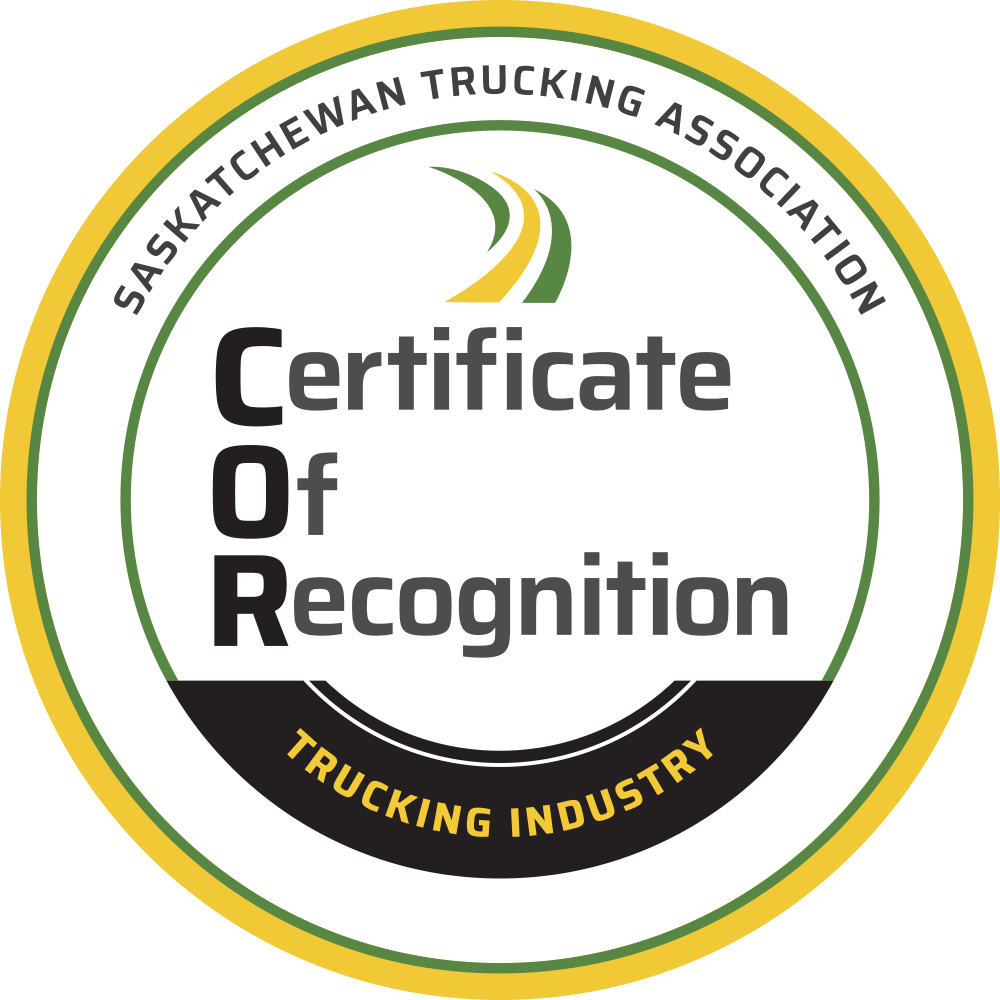
STA: Saskatchewan is short about 3,000 truck drivers
Sep 08, 2022
"Trucking companies are still facing challenges in their ability to attract labour. Driver shortages right across the country continue to persist," said Jordan Ewart with Sask. Trucking Association. "In quarter two of 2022, so in June 2022, truck driver job vacancies went up as high as 25,000 across the country."

ESTEVAN — Truck drivers have always been in high demand. While the job pays well, it requires very special people to be able to be away from home for extended periods, be fine being on their own and be able to keep the economy moving.
Recent events, including the pandemic and decisions to retire earlier made by many drivers, put even a bigger strain on the industry.
Jordan Ewart, manager of policy and government relations with the Sask. Trucking Association (STA), said there are a lot of challenges that the industry is facing.
"Trucking companies are still facing challenges in their ability to attract labour. Driver shortages right across the country continue to persist," Ewart said. "In quarter two of 2022, so in June 2022, truck driver job vacancies went up as high as 25,000 across the country,” said Ewart.
“If you look a little bit closer to home, though, here in Saskatchewan, our government predicts between 2019 and 2023, that there are 3,000 plus job openings in the truck driver seat. Certainly, it's been a challenging time with COVID, retirements, layoffs. Turnover is always a challenge. And then, of course, recruitment."
Truck drivers' shortages in Canada have been a challenge for the last 15-20 years, and there are multiple levels when it comes to supply chain issues.
"The driver shortage is something that's talked about consistently from East Coast to West Coast. And it's not even just in the truck driver's seat; the supply chain takes a whole community. You have shippers and receivers, you have dispatchers, you have mechanics, and there are shortages in there as well. So really COVID just essentially magnified, and of course, contributed to it," Ewart said.
He specified that 71 per cent of the Canada-wide openings are reported to be the positions that the companies are constantly recruiting. That brings up a number of issues, including the ability to retain employees and turnover. Saskatchewan sits a lot higher than the national average for turnover.
"It makes it even more difficult when you're not seeing an influx of new drivers. Guys are going to hop around from company to company. Company A might pay a little bit better, company B might give me a little bit more time off," Ewart explained.
In general, the industry becomes more employee-oriented, is improving for its workers and becomes more diverse and inclusive. Top employers have a strong workplace culture, additional training and skills development opportunities to become a better driver. They also have HR leadership within organizations that helps make it for a better experience for employees. And some companies are getting more imaginative.
"Many trucking companies have switch yards. So I might start in Regina and go to Grenfell, and then somebody who's started in Winnipeg will meet me there and take the trailer the rest of the way over to Manitoba, so the driver who starts their day in Regina can get back home," Ewart said, giving an example.
"I'm aware of companies who really value some of that family aspect and will work with their drivers to ensure that there's some flexibility so they can take their kids to sports or take their kids to dance or ensure that they're going to a Christmas concert during school season. So companies that can offer different bonuses, strong pay, compensation for safety, rewarding those safe behaviours on the road, those are companies that are going to have a lot better time retaining the employees that they have."
COVID brought new challenges to the industry, but since the truck drivers' job is fairly isolated, trucks kept moving even during the early stages of the pandemic. Yet now that we are emerging from that state of emergency, employers start looking to find some new talent pipelines and start attracting a new generation of truck drivers.
"A lot of companies, too, are starting to look at how do we recruit more women into the workplace. That's a huge untapped population that we could be talking to and educating about careers in trucking. And at the STA that is our role. We have a program that we've partnered with the YWCA of Saskatoon [a community-based organization that provides preventative and emergent services to women and their families], called Women Shifting Gears, and the point of that program is to educate and help women on their path to becoming transportation professionals. So certainly, companies are starting to think outside the box. How do we attract workers? How do we keep our workers? And also listening to what employees need," Ewart said.
There is a lot of pride in being a truly essential worker and an essential piece of the economy, especially in landlocked Saskatchewan. There is also decent financial compensation for being a truck driver. Besides, the career assumes a lot of travelling opportunities and now more and more often, it provides a good work-life balance. But it also takes some specifics to join the field. Being a professional truck driver means being on the road for potentially up to two weeks at a time. A person considering a career in the industry needs to be independent and to be okay being away from home. They also need to be safety-oriented.
"The most important thing for anybody who is considering a career in trucking is you need to value safety. As well, you need to have strong attention to detail," Ewart said.
On the technical side of things, a future truck driver has to go through Mandatory Entry Level Training (MELT). The MELT program is 121 1/2 hours and usually takes about four weeks to complete. Ewart noted that the program is only the first step in building those skills and getting a class 1A licence.
"Employers are looking for experienced drivers usually with that two years piece, which can be a bit of a barrier in terms of being able to grow your workforce," Ewart said. "[But] there're companies out there with internal training programs. So if you go through MELT, get your licence in four weeks, and you get hired, you might go and do a driver-finishing style program, and you might be team driving with more experienced drivers. So employers that are looking to grow and are willing to hire entry-level drivers certainly need to ensure that they're providing further training for that individual, because MELT simply does not make you a professional truck driver."
It's more challenging for smaller employers, like many family businesses in Saskatchewan, to provide this additional training. The medium-sized and larger companies are more capable of having these programs in place simply because they have the manpower.
"It's a tricky piece. I would say that smaller employers are at a bit of a disadvantage for trying to hire entry-level drivers. They simply just don't have the time to do that additional training," Ewart said.
Canada is celebrating the industry and all truck drivers during National Trucking Week from Sept. 4-10 this year.
This article was posted by Estevan Mercury.
Let's Build a Stronger, more Inclusive Industry
Drive Her Future
We are dedicated to encouraging more women to explore careers in trucking—whether as drivers, dispatchers, dock workers, or beyond.
Categories | Driver Shortage
Tags | Careers, Driver Shortage, Government, Supply Chain
Related Links
-
STA: Saskatchewan is short about 3,000 truck drivers
"Trucking companies are still facing challenges in their ability to attract labour. Driver shortages right across the country continue to persist," said Jordan Ewart with Sask. Trucking Association. "In quarter two of 2022, so in June 2022, truck driver job vacancies went up as high as 25,000 across the country."




